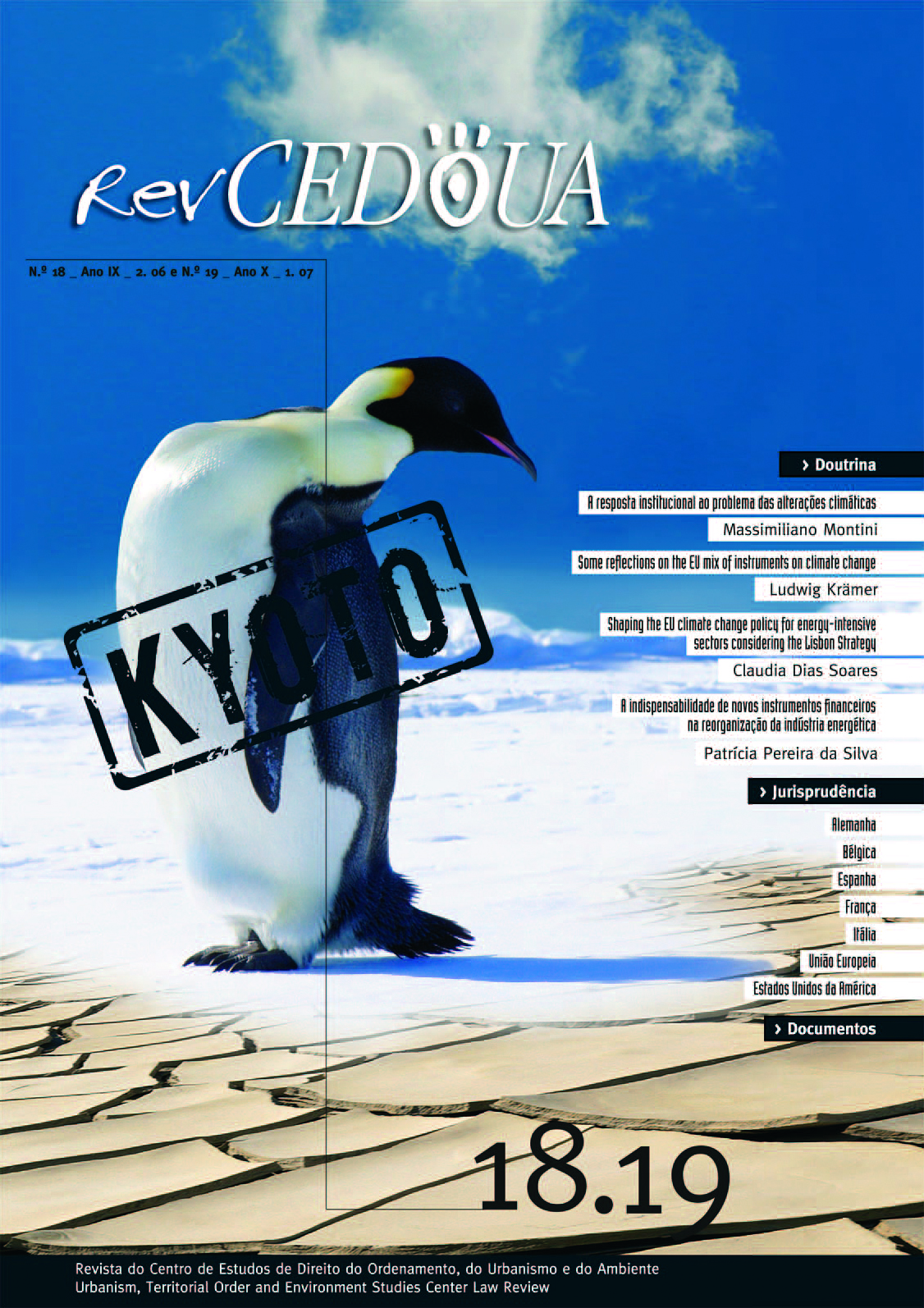Some reflections on the EU mix of instruments on climate change
DOI:
https://doi.org/10.14195/2182-2387_18-19_2Abstract
The article provides an overview of what has been done at the level of European institutions to prevent greenhouse gas emissions within the framework of various European energy-related policies. It describes measures ranging from incentives (such as the energy products tax regime, financial support measures, promotion of alternative energies, energy efficiency in buildings, and cogeneration) to more flexible legal instruments (such as energy labeling and voluntary agreements with the automotive industry to limit vehicle CO₂ emissions). Within the framework of the Kyoto Protocol, the “burden sharing” mechanism and emissions trading are explained. The second part presents a rigorous analysis of the actual results achieved in light of the political commitments made. The absence of a comprehensive climate action program and the limitations imposed by the functioning of the Union—which is highly dependent on the actions of its Member States—make the conclusions rather discouraging. Finally, by synthesizing the targets agreed at the EU level and the measures adopted in energy policy, the article outlines what the future of EU policy will be from 2008 onwards. A realistic technical, economic, and political perspective suggests serious challenges in meeting the defined targets unless urgent measures are taken.
Downloads
Downloads
Published
Issue
Section
License
Copyright (c) 2006 Ludwig Krämer

This work is licensed under a Creative Commons Attribution 4.0 International License.
Authors retain copyright and grant the journal right of first publication with the work simultaneously licensed under a Creative Commons Attribution License that allows sharing the work with recognition of authorship and initial publication in Antropologia Portuguesa journal.



